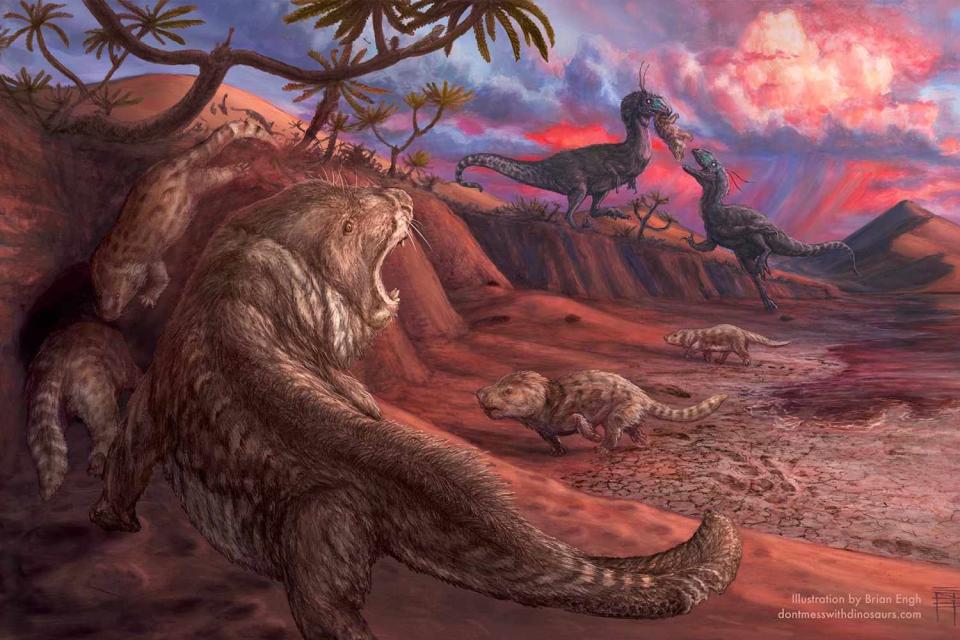Fossils of Rare Mammal Relatives from 180 Million Years Ago Found in Utah
A field crew found the first tritylodontid bonebed in the Navajo Sandstone, said the National Park Service

NPS / Brian Engh
A painting depicting an Early Jurassic scene from the Navajo Sandstone desert preserved at Glen Canyon NRAThe recent discovery of extremely rare fossils from the Early Jurassic period in Utah is an example of being in “the right place at the right time.”
The National Park Service (NPS) announced in an Oct. 6 press release that a Glen Canyon National Recreation Area (Glen Canyon NRA) field crew found the first tritylodontid bonebed in the Navajo Sandstone as they were recording fossil tracksites along Lake Powell.
“The discovery included body fossils like bones and teeth which are rare in the geologic formation known as the Navajo Sandstone within the Glen Canyon Group. This new discovery will shed light on the fossil history exposed on the changing shorelines of Lake Powell,” said the NPS.
Never miss a story — sign up for PEOPLE's free daily newsletter to stay up-to-date on the best of what PEOPLE has to offer, from celebrity news to compelling human interest stories.
According to the NPS, paleontologists in March of this year discovered a rare fossil horizon featuring impressions of bones and bone fragments of tritylodontid mammaliaforms — early herbivorous mammal relatives dating back to 180 million years ago.
Related: Teacher Finds Fossil That Could Be 300 Million Years Old While Walking Dog on Beach: 'Incredible'
“The site had been submerged by Lake Powell’s fluctuating water levels,” continued the NPS, “and was only found because the paleontologists were in the right place at the right time before annual snowmelt filled the lake.” As a result, the field teams only had 120 days to recover the fossils before that happened.
Several hundred pounds of rocks containing the fossil bones and skeletons were retrieved, said the agency, and will be scanned via X-ray computerized tomography (CT) at the University of Utah South Jordan Health Center, and mechanically prepared and studied at St. George Dinosaur Discovery Site at Johnson Farm (SGDS). Additional assistance will be provided by the Petrified Forest National Park and the Smithsonian Institution.
Related: Girl, 9, Finds Rare Megalodon Shark Tooth Fossil at Least 3.5 Million Years Old on Maryland Beach
The Prehistoric Museum in Price, Utah, will then house the fossils as part of the Glen Canyon NRA museum collections.
The NPS’ announcement of the latest discovery coincided with National Fossil Day, which took place Wednesday.
Related: Rare Dinosaur Known as 'Barry' to Go on Sale in Paris Auction
The agency also said in its news release that another rare bone bed was found nearby in the slightly older Kayenta Formation, but no further details were provided about that particular discovery.
For more People news, make sure to sign up for our newsletter!
Read the original article on People.

